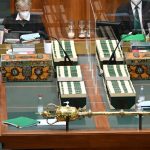Transforming our economy from innovation to collaboration
Today Prime Minister Malcolm Turnbull and Christopher Pyne, Minister for Industry, Innovation and Science, released a major innovation statement. Angus M Robinson reflects on the history of reviews over the years and suggests how we might get it right this time.
Since the election of Prime Minister Turnbull, the word innovation has been bandied around without much serious discussion given to what the concept actually means. The former Advanced Manufacturing CRC (predecessor to the current Innovative Manufacturing CRC) has encapsulated this concept with the offer of a very useful definition; inter alia, ‘The creation, development, protection and commercialisation of know-how, new products and/or processes that pre-empt the market by the application of scientific and technological skills.’
The CRC has taken the view that this definition is important because it recognises that innovation is a formal process that can be carried out by an individual, a company or publicly funded research organisation, or any of these collaboratively, and that the driver of innovation has to start with how best Australia can create and manage intellectual property.
Earlier, in 1996 and inspired by its then Executive Director, Professor Trevor Cole, The Warren Centre for Advanced Engineering of The University of Sydney, brought focus to bear in Australia on the importance of innovation. The annual Warren Centre Innovation Lectures, which commenced in that year, have since played an important role in raising awareness of technology and innovation in Australian industry and in creating role models.
With another innovation statement to be issued soon by the Turnbull Government, Paul Hodgson, a LinkedIn commentator, reflected last week on the history of statements during his 24 year career in the innovation system, and what he’d like to see in the next statement. Paul dutifully listed some major national innovation reviews and statements that have occurred during this period. He pointed out that Section 1 “Science and Technology in Context”, in a little over five pages at the beginning of the “1993/94 Science and Technology Budget Statement”, captured our national challenges and opportunities with words and intent that are still very much relevant today, paraphrasing, “innovation is one of the keys to economic development … a weakness in the ability to exploit our R&D in many fields … a high priority to establishing Australia’s place in Asia … a clear sense of direction, planning and leadership are needed to achieve our goals … our most urgent task is to build an innovative culture in industry … above all, we need a cultural change – among business leaders, decision-makers, and the community generally – which recognises the major significance innovation has for building national competitiveness.”
Paul also referred to other ‘innovation’ reviews and statements as follows, all of which I remember too.
- 1995 – “Innovate Australia”
- 1996 – “Going for Growth”
- 1997 – “Investing for Growth”
- 2001 – “Backing Australia’s Ability – An Innovation Action Plan for the Future”
- 2004 – ‘Building Our Future through Science and Innovation”
- 2007 – “Global Integration: Changing Markets, New Opportunities”
- 2008 – “Venturous Australia – Building Strength in Innovation”
- 2009 – “Powering Ideas: An Innovation Agenda for the 21st Century”
- 2013 – “A Plan for Australian Jobs”
- 2014 – “Industry Innovation and Competitiveness Agenda”
Paul concluded by asking why our national innovation challenge still persists 22 years later?
Referring to other perspectives, for my part, I noted that in 2008, the Australian Innovation Research Centre at the University of Tasmania identified five key dimensions of a healthy innovation system to be strengthened by government action, i.e.
- opportunity identification;
- knowledge creation and distribution, including higher education and research;
- business development and production capabilities;
- financial risk management; and
- knowledge and other technological infrastructure.
It is worth noting that the Howard Government Electronics Industry Action Agenda focused over the period 2003 to 2007 on at least two of these dimensions i.e. opportunity identification as well as business development and production capabilities. It was recognised that the ongoing outcomes of this industry-led program, and other like science/technology related agendas, could be strengthened by government policies and programs which focus on global integration, hence the evolution of the then Government’s ‘Global Opportunities’ program. Put simply, it was realised that our innovation system needed to be globally ‘market facing’ and marching to the tune of identified opportunities and challenges which can be realised by the application of Australia’s hitherto untapped technological capabilities and abilities.
Back in July 2005, to further this aspiration, and as part of the above-mentioned Electronics Industry Action Agenda, the Australian and Taiwan ICT industries agreed to co-operate in the mutual development of their electronics and ICT sectors through the implementation of a program of engagement guided by a strategic framework agreement (ATSFA) as a logical consequence of an active program of activities developed between the key electronics industry associations representing both countries.
For the Taiwan side, the Institute for Information Industry (III) was assigned responsibility to communicate with the Taiwan Government and to participate in areas assigned. For the Australian side, it was decided that the Electronics Industry Action Agenda Strategic Leaders, would coordinate engagement from the Australian side and communicate with the Australian Government. The truly unique ATSFA addressed five key pillars of engagement (i.e. partnership and collaboration).
- Technology R&D
- High Value Added ICT Manufacturing
- Strategic Alliances
- Investment Collaboration
- Trade Facilitation
However, persevering for only a few years, the Australian side soon lost interest in this approach. Nevertheless , given the success of Taiwan’s industry development record over the 50 years, it has to be recognised that the five core pillars of engagement embodied into ATSFA all need to be addressed simultaneously by Australian industry and governments wishing to succeed in building new globally focused,’ value adding’ manufacturing enterprises over the long term.
Now, in the context of the Coalition Government’s current policy framework, the ‘growth centre’ model for advanced manufacturing has five key elements, as follows.
- Industry led – emphasis on engaged enterprises (not observers)
- Focus on engaging Australian companies with global supply chains and (therefore) markets
- Engagement and collaboration on projects and programmes
- Achieving all Growth Centre objectives by bridging the commercialisation “valley of death”
- Public: Private funding giving way to Private: Public funding over four years to enable sustainability
However, it is my view that this model can be improved by incorporating other tenets of the abovementioned ATSFA model, in particular, by seeking global strategic alliances, a higher focus on attracting international investment, and by strengthening capabilities in trade facilitation. In a functional sense, it is increasingly recognised that more work needs to be undertaken by industry, in association with Austrade, in actually exploring for and identifying technology gaps and opportunities in global markets.
On the subject of strategy, the Advanced Manufacturing CRC has also written about the practical aspects of strategy, reminding us that ‘a good strategy does more than urge us forward toward a goal or vision; it honestly acknowledges the challenges we face and provides an approach to overcoming them. Focus needs to be determined through a rigorous process of choice.’
It can argued that these latter considerations clearly need to be driven within a national strategic framework which could best be driven by the establishment of an ‘Economic Development Board’ comprising industry, business and government representatives. Unlike most other countries in the developed and developing world, Australian economic development is not strategically driven by a coordinating agency responsible to Executive Government. Moreover, none of the central government agencies or industry portfolio agencies (or the Productivity Commission for that matter) have this clearly defined role as a core mission. By way of example, Singapore’s Economic Development Board (EDB) is a shining example of how national economic policies can be driven strategically to ensure that Singapore is truly an ‘agile’ economy.
In summary, it is arguable that a new innovation policy needs to focus strategically on building large scale, advanced manufacturing capability embodied by ‘new industry’ creation and capable of generating over the long term substantial levels of new revenue for Australia’s external revenue account.
In the absence of an overarching strategic framework, any innovation policy which just focuses on ‘start-ups’ risks committing Australian industry to no more than ‘cottage industry’ status incapable of collectively building the revenue flows necessary to sustain Australia’s standing of living. If we have learnt anything from Australia’s mineral industry, it has been the realisation that this industry grew by developing large mining enterprises capable of generating substantial revenue flows for the nation. Our mining industry has not been characterised by a raft of ‘small show operators’ struggling to remain viable.
I agree with another recent LinkedIn commentator Anthony Head, who suggested that we needed to move on from the language of ‘innovation’ and to embrace instead ‘collaboration’. I would further argue that Australians need to ‘collaborate to compete’ and conclude with the Coalition Government’s recent response to the Harper Review which, according to Treasurer Scott Morrison, “sets out a productivity and competition agenda that, combined with our efforts to create a better tax system, will boost innovation, open up new markets”, and which will, according to the Treasurer, “see Australia prosper in the years ahead”.
Angus M Robinson is an exploration geologist by profession. After the past 20 years working in technology and industry development executive roles (including The Warren Centre for Advanced Engineering at The University of Sydney, the Australian Technology Park, and as the former CEO of the Australian Electrical & Electronic Manufacturers’ Association), he is now working in geotourism industry development, as well as maintaining his interest in manufacturing as the Co-moderator of the LinkedIn discussion group, Manufacturing on the Move.













